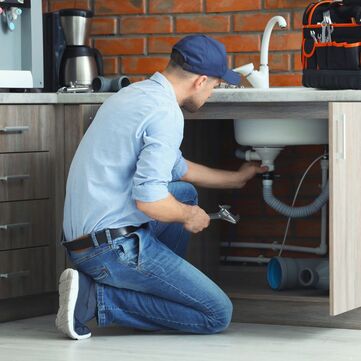 As the flowers bloom in the Midwest, it's time to shift our focus to springtime maintenance tasks around the home, including our plumbing systems. Winter can be harsh on pipes and fixtures, so giving your plumbing some TLC is essential to ensure everything is in top shape for the warmer months ahead. In this blog post, we'll provide a comprehensive spring plumbing maintenance checklist to help you prepare your home for the season. Inspect Outdoor Faucets and Hoses:
*Essential Plumbing Tips: Maintaining Your Home’s Vital Systems | Pirdu. https://pirdu.com/essential-plumbing-tips-maintaining-your-homes-vital-systems/
0 Comments
 The New Year is here! What better way to ring in the new year than with a smoothly functioning plumbing system? Here are some tips to help you tackle those pesky plumbing issues and ensure your pipes are happy and healthy in the new year: Resolution #1: Tackle those lingering leaks:
By following these simple tips, you can ensure your plumbing system runs smoothly throughout the new year. Remember, taking care of your pipes today saves you time, money, and stress in the long run. So, raise a glass (of water, of course!) to a fresh start and happy plumbing in the new year! 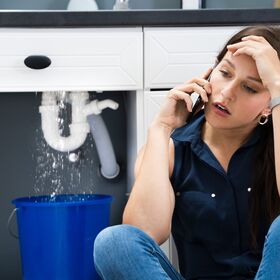 As a homeowner or renter, we have to deal with many issues that spring up. One of those is a leaky pipe. But what do you do? If it’s something outside of your ability to fix, call the plumber right away to have them make an emergency visit. But in the meantime, what do you do to provide a temporary fix to keep the damage to a minimum? First thing you’ll want to do when you discover a leaky pipe is to throw a bucket underneath it to stop water from getting all over the floor. Then quickly turn the main water valve off to stop the flow of water coming through the pipes. Then turn on the faucets connected to the leaky pipe to drain those pipes. Next, you’ll want to clean up the mess, by drying the wet areas with some towels. Including wiping the leaky pipe dry to prepare it for a temporary patch. Tighten the joints of the pipes with an adjustable wrench to fit it to the pipe’s size. If the pipe has loosened, then that may be a source of where the leak is coming from. So you’ll want to tighten them up. Depending on the items you have in your home or have time to pick up at your local hardware store, you can patch the pipe in a few different ways. The preferred way is to apply some epoxy putty. You’ll need some rubber gloves to knead the putty by hand, and then you can apply it to the source of the leak. Wrap the putty completely around the pipe where the leak is happening about an half inch thick, taper the edges so it has a water tight seal. You can turn the water back on after 5-10 minutes after it is dry. You can also apply duct tape, by wrapping it tightly around the pipe several times while you wait for the plumber to arrive. When you’re in need of emergency plumbing services, give us a call at Tony’s Plumbing for quality service to help you in your time of need. We can get someone to your home and to fix the leak as quickly as possible! 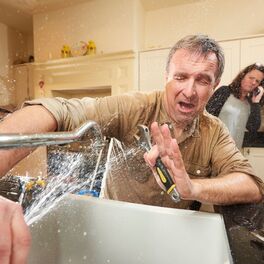 Pretty much all of us operate our lives on a fixed budget. So when it comes to home repairs, it’s easy to push off any work that needs done as long as possible. Maybe you have to save some money before the repairs happen, so you prolong the inevitable. But when it comes to plumbing, delaying work can cost you. One of the most common plumbing issues is having a leak. These can sometimes be an easy repair and it can definitely be easy to do a quick fix to delay major repairs. But what will it cost you in the long run? On the bigger scale, your small leak can easily turn into a bigger leak and cause flooding, which can damage everything. Floors, walls, furniture… On a smaller scale, if you have a leak in your bathroom sink, bathtub or toilet can lead to rot and mold issues. Leaks can also cause bug damage from water loving insects, higher water bills, and unpleasant odors. Temporary fixes can last for a short amount of time, but it’s best to call the plumber right away to fix a leak, or you’ll end up with much costlier repairs due to the damage a small leak can cause. Mold - One of the biggest problems you could face is mold. Breathing in mold can be dangerous for those living in the house, especially for children with compromised immune systems. If left unattended mold will keep growing and can lead to having a professional to clean it up. Water and Structural Damage - A leak anywhere in the house can lead to water damage on walls, flooring, furniture, and carpeting. And the longer the leak is left to do its business, the greater the water damage gets. In particular cases, if it seeps through cracks and floors, weakening the support of the building, leading to structural damage in the foundation. Water Loss- Leaks can cause water tanks to work harder to pull more water into the system. And it can cause water pressure to drop, so faucets and showers have less pressure when they are running. Since your water tank has to work harder and you’re losing water, this can lead to higher utility bills as well. So whenever you discover a plumbing issue, no matter how small, it’s best to get it taken care of right away. You may be inclined to put off spending money on smaller issues, but ignoring them can lead to much bigger issues that will cost you much more money. If you find yourself with any plumbing problems, call us today at Tony’s Plumbing and we’ll make sure your plumbing is done right.  As homeowners, there can be lots of things to learn. There’s the life expectancy of the roof, the HVAC, appliances, etc, etc… The list goes on and on. But have you thought about your plumbing? We all know how important this aspect of your home is. If you’ve ever had to turn off your water, then you realize immediately how often you are utilizing it. So let’s talk about how long different facets of your plumbing should last. First, let’s start with your water heater. Depending on the type of water heater you have, the life span will vary. A traditional water heater will last about 8-12 years (depending on the manufacturer’s suggested service life). While a tankless water heater should get you around 20 years of operable use. These are the typical lifespans for these units, though there are variables to this particular item, like how many people in your house are using the hot water everyday. Your water heater should have a sticker on the side of it stating the year it was installed, if not, then it should be included on your water heater manual. Your pipes might be the most important thing to know the status of. If they are compromised, then there is a potential for a broken pipe in your house that can cause all sorts of expensive water damage. So it’s best to know that they are in solid shape. If you don’t already know, check your home inspection report or home warranties as to when your plumbing was installed and what type of pipes are in your home. Metal pipes like steel, iron, and brass will generally last you about 50-70 years, while copper will last a little longer at 70-80 years. Plastic PVC piping doesn’t last as long, with a lifespan of less than 50 years. Consider hiring a plumber to inspect the current state of your pipes if you are unsure about their status. Moving onto the lifespan of your faucets. These typically will last you about 12 years, but might need some additional maintenance to make it that far. If there is a hard water build up, they may need a cartridge replacement. If there is leaking, you can try taking it apart and reassembling it. But this might require a replacement if tightening the parts doesn’t do the trick. If you find rust coming out of the faucet, then it’s definitely time to get a new faucet. For those of us with sump pumps or well pumps, that’s another plumbing aspect to be aware of. Sump pumps help keep basements dry and usually last about 10 years, so remember to keep this one on your calendar and have it inspected when you are approaching 10 years to make sure it’s still properly running to avoid potential basement damage. And for those of us with well pumps, the lifespan is about 8-15 years. Depending on how many people are in the house, water usage, and how much sediment can build up, all can determine how long the well pump will last. This is also an important one to be aware of, since it is what provides water into your house. And last, but not least, your toilet. These will last a long time, up to 50 years. But the components in your tank might not last quite as long. These can be easy fixes, and you’ll know when these parts need replaced, because you’ll have trouble with flushing the toilet. If you have an older toilet, that is not energy efficient, consider having that replaced to get a smaller water tank. This can help save on your water usage and your billing.  If you are a new homeowner or renter, then you should figure out where your shut-off valves are located in your home. Even if you have lived in your home for a while, if you don’t know where they are, you should. A shut off valve will stop water from entering into your home, so all your plumbing fixtures can’t run water while it is closed. So it’s best to know where it is in case of emergencies, like trouble with leaking or broken pipes. Especially when winter weather hits, any exposed pipes are open to cracking and freezing. And if that terrible fate of burst pipes falls upon you, then you are in for a big mess of water everywhere. So if you find yourself in that horrible situation, you’ll need to know where your main shut-off valve is located so you can turn the water off quickly! It’s also good to know where the main shut-off is located if you need to do work on any of your plumbing. To locate your home's main water shut-off valve, you’ll want to look on the perimeter of the inside of the house, since that is where the water will first enter your home. Search for the valve on your lower level, they are typically found in a basement, if your home has one. If you don’t have a basement, try looking inside a crawl space (again, if you have one). The valve is usually located within three to five feet of where the water main enters the home. It should enter your home from the side facing the street. If you can’t find it on that wall, then you’ll want to check near the furnace and water heater, or in a mechanical room. It could also be hidden in a closet on the perimeter wall, so don’t forget to check those. The main valve is the one located next to the water meter. Once you’ve located it, you should know how it works. If you have a handle on your valve, and it is parallel to the pipe then the valve is open. And if the handle is perpendicular to the pipe, then the valve is closed. Or if there is a handwheel on the valve, then the old “righty tighty, lefty loosey” adage works. Just turn the handwheel left to open and then right for the closed position. If you happen to find yourself in the unfortunate situation of burst pipes or any other cause that has you running for the main shut-off valve, give us a call today at Tony’s Plumbing and we’ll help you get it all fixed up so you won’t have to think about your shut-off valve again. 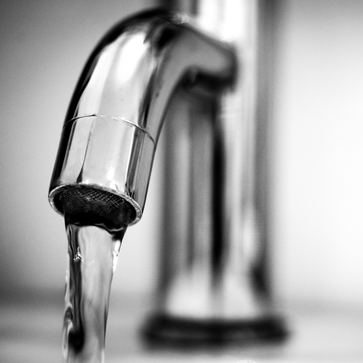 Have you ever looked around your home and wondered about the quality of your plumbing? Plumbing is an important and intricate part of any building design, and can be incredibly frustrating when problems arise. The various types of pipes all exist for different reasons, and come with their own list of pros and cons. There are loads of rules and regulations that stand in the way of shabby jobs and can prevent costly mistakes, but old homes often come with old plumbing. So, how does one know what kind of pipe is the best for plumbing? For more than a century, copper pipes were used for indoor plumbing, and were the best option available. These natural pipes create a biostatic atmosphere which limits the growth of bacteria, but they are expensive and require extensive labor to install. In cold weather climates, these pipes freeze and in worse cases burst. The durable quality is a benefit but these pipes do still corrode with certain pH levels, making them unappealing in our Minnesota weather. ABS, or acrylonitrile butadiene styrene, pipe was developed in the 1950’s in Arizona. These pipes were created for use in the chemical industry, and oil fields. ABS pipes were discovered to be easier to work with and cheaper than their metal alternatives such as copper, cast iron and galvanized steel. There is one crucial difference between ABS and PVC pipes, though, and that is how they are formulated. ABS pipes contain BPA to harden them, making these pipes poor candidates for most plumbing projects. Polyvinyl chloride, or PVC pipes were generated using copolymer clay and date back to 1912 Germany, though due to poor quality and lack of success with production, they were not used as plumbing until 1936. In the years following, there was a gradual uptick in the properties built and plumbing replaced using the PVC pipes, as they were found to be more durable and suitable for waste relocation. PVC pipes were used in much of Germany and Japan’s rebuilds after WWII, where they became a building standard and are still used today. PVC was the standard for a long time, but was shown up by PEX pipes in the 1980’s. PEX is a polyurethane pipe with cross-links. It is cost effective, flexible and doesn’t require the use of joints which can promote weak spots in the plumbing. PEX pipes are seen in most new homes being built today, and are an easy industry standard. It’s important to do your research before starting any big project, and to always check the local building codes. These regulate the types of piping you can use in your home projects so your decision may have been made for you. If you’re looking around considering if your plumbing is the next big upgrade at home, you could be right! That being said, we don’t recommend you taking on that project, or even that consideration, alone. If you’ve had a long and tiresome history with your pipes, either freezing, creaking or leaking, we are here for all your plumbing questions. 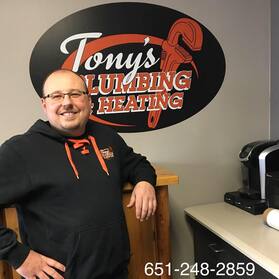 One of the unsung heroes of your home is your plumbing system. The plumbing work of any facility is often overlooked, except ours of course! That’s why we often surprise our customers when we point out the little things that they are doing to sabotage their own systems. It’s hard to know what you don’t know, right? On that note, here are some common things we see our customers doing that backfire and end with a frantic call to us. Your drain seems like a logical place to dumb kitchen liquids, but it’s actually one of the worst things you can do for your pipes! Anything greasy or oily needs to go in the trash. The grease may be liquid when used for cooking, but eventually hardens inside your piping. Overtime, the greasy patches can catch other items attempting to travel through the drain, and cause catastrophic clogs. Be mindful of anything you are putting down your drains! This one goes out to the DIYers of the world. If you’ve ever grabbed your flashlight and taken a look under the sink, maybe tightened a fitting or two, this is for you. We naturally tighten things to ensure that they’re secure, after all, you don’t want water to leak out everywhere. This intuitive thinking is great, but misplaced here. Over-tightening in plumbing actually causes the fittings to crack overtime. This goes for plastic fittings, hex nuts, all of the above. You can actually destroy your porcelain toilet by over tightening, so be cautious and if you’re ever unsure, contact us! The market leads us to believe that chemical drain cleaners are the way to go, but we are here to say the opposite. This is yet another common mistake that homeowners make when taking clogs into their own hands. Chemical drain cleaners are bad for the environment, and bad for your plumbing! These cleaners create a lot of issues for galvanized plumbing, including speeding up corrosion. There are natural ways to unclog toilets, such as using an auger, or vinegar and baking soda solutions. If you have a stuck clog that’s too much to handle on your own, you know who to call. The last thing we’d like to leave you with, is something that’s fairly straightforward. Your drains are for fluids, the toilet is for bodily waste. Some plumbing is so finicky it can’t handle toilet paper, so keep that in mind when you flush. Nothing should go down your drains beyond what they are intended for, so keep trash, hygiene products, and anything else out of the toilet or garbage disposal! This will keep your plumbing working it’s best for longest. As always, we are around for any mistakes you may make with your plumbing. Your secrets are safe with us, judgement free! We aim to help in any way possible, so even if you just have some questions about the how or why of a product or repair, we are here to help! Call Tony’s today for any and all your plumbing needs. 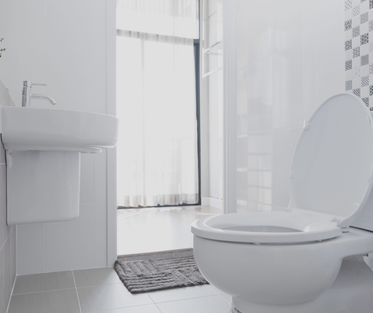 We are blessed to live in a society with running water, and one of the greatest inventions of mankind; the toilet. When there’s a problem with your toilet, especially when you only have one, it’s an issue the whole family feels. Not every clogged toilet is a plumbing emergency, and sometimes it’s hard to identify why your toilet is acting up. We’ve compiled a list common issues to be aware of, so you can identify the preliminary issues on your own before having to call in a professional. The most common issue with a toilet that won’t flush is that it’s clogged. This is the first thing you should be checking off your list if there’s an issue with your toilet. Some homes have delicate pipes, so it’s important to take into account the number of people in your home, if you have children with missing toys, and the quality of your toilet paper. Your pipes can occasionally develop partial clogs that mean there’s waste or debris sitting in your pipes hindering your water flow. The easiest fix here is to attempt plunging the toilet on your own. We don’t suggest any other DIY attempts for a clogged toilet. If you have a stubborn partial clog deep within the plumbing, it’s best to give us a call so we can diagnose and repair for you. We often see toilets that aren’t holding enough water in their tank. This is yet another extremely common issue with toilets. If there’s not enough water in the tank, when you flush you’re not releasing enough water into the bowl, which leads to a lower pressure and a weaker flush. This is sometimes caused by low water pressure, the toilet water being partially shut off, or a faulty flapper. There should be a mark inside the toilet indicating the level of water necessary for a full flush. Each toilet has a different system though, so the best way to tell if your toilet tank is holding enough water is to make sure that it’s about an inch beneath the overflow tube. If you’re not getting enough water, let us know. Our last most common issue we find with toilets is when the flapper or lift chain are damaged. The flapper is, as you might have guessed, the flap that covers the piping into the bowl of your toilet. If that piece is warped or damaged in any way, the toilet will not hold the correct amount of water, and will experience issues when flushing. The lift chain is the piece that connects the flapper to the arm extending to the flush lever. If this chain is too short or gives too much slack, the flapper will not properly lift and won’t flush your toilet either. These parts of the toilet are utilized every time your toilet flushes, so as you can imagine, that’s a lot of opportunity for wear and tear. The pieces can be replaced at home, but if you’re ever unsure, please give us a call. We really don’t mind. Toilets are an important member of the household in any and every home. If it’s not in working order, everyone will be painfully aware. These are just some of the common issues we see toilets face, but that doesn’t mean they’re the only problems your toilet could have. If you’re experiencing issues with your toilet, and you can’t diagnose the problem on your own, we’re always here to help. If you diagnosed the problem but can’t fix it, we’re here for that too. Give us a call today and see what we can do for your home. |
AuthorAt Tony's Plumbing & Heating, we offer outstanding residential and commercial plumbing and heating services in the East Twin Cities metro. With our blog, we hope to bring you useful tips and tricks for ever day life! Archives
June 2024
Categories
All
|
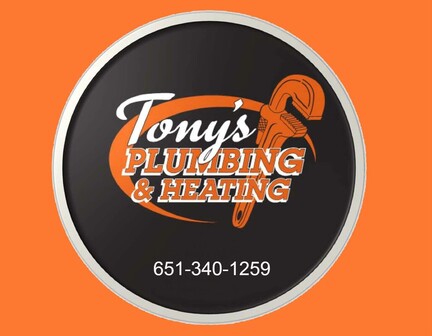
 RSS Feed
RSS Feed